Best Resources for Swift Programming to Buy in November 2025
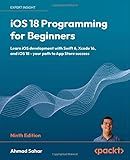
iOS 18 Programming for Beginners: Learn iOS development with Swift 6, Xcode 16, and iOS 18 - your path to App Store success


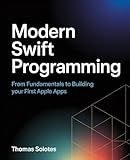
Modern Swift Programming: From Fundamentals to Building Your First Apple Apps


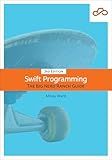
Swift Programming: The Big Nerd Ranch Guide


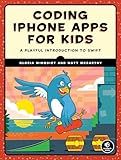
Coding iPhone Apps for Kids: A Playful Introduction to Swift


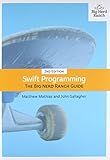
Swift Programming: The Big Nerd Ranch Guide (Big Nerd Ranch Guides)


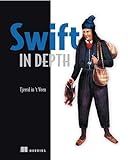
Swift in Depth
- MASTER SWIFT: UNLOCK IOS DEVELOPMENT WITH EXPERT INSIGHTS!
- STEP-BY-STEP GUIDANCE: PERFECT FOR BEGINNERS & PROS ALIKE!
- BONUS CONTENT: ACCESS EXCLUSIVE CODE EXAMPLES & RESOURCES!



Swift Cookbook: Proven recipes for developing robust iOS applications with Swift 5.9



SwiftUI & Swift 6 Development Bible: Learn to Build iOS, macOS, watchOS, iPadOS, and visionOS Apps the Smart Way (Swift and iOS Mastery)



Head First Swift: A Learner's Guide to Programming with Swift


To convert a byte array to a string in Swift, you can use the String initializer that takes a utf8CodeUnits parameter. Here's the code:
let byteArray: [UInt8] = [72, 101, 108, 108, 111] // Example byte array if let convertedString = String(bytes: byteArray, encoding: .utf8) { print(convertedString) // Output: "Hello" } else { print("Failed to convert byte array to string") }
In this example, we declare a byte array byteArray, which contains the ASCII values for the characters 'H', 'e', 'l', 'l', and 'o'. We then use the String initializer that takes a bytes parameter and encoding .utf8 to create a string from the byte array.
The initializer returns an optional String?, so we use optional binding to unwrap the converted string. If the conversion is successful, we print the converted string as output. If the conversion fails, we print a failure message.
Make sure the encoding used to convert the byte array matches the encoding used when generating the byte array. Common encodings include .utf8, .utf16, and .ascii.
How to encode a string to a byte array using URL encoding in Swift?
In Swift, you can use the addingPercentEncoding(withAllowedCharacters:) method to URL encode a string, and then convert it to a byte array using the utf8 encoding. Here's how you can do it:
if let string = "Hello World!".addingPercentEncoding(withAllowedCharacters: .urlQueryAllowed) { if let data = string.data(using: .utf8) { let byteArray = [UInt8](data) print(byteArray) } }
In the code above, addingPercentEncoding(withAllowedCharacters:) method is used to URL encode the string. The urlQueryAllowed character set is used which includes only those characters that are allowed in a query string.
Then, the string.data(using: .utf8) method is used to convert the URL encoded string to a Data object. Finally, the Data object is converted to a byte array ([UInt8]) using [UInt8](data).
Note: To access the Foundation framework required for using these methods, make sure to import it at the beginning of your Swift file:
import Foundation
This code will print the byte array representation of the URL encoded string.
Make sure to replace "Hello World!" with the actual string that you want to encode.
How to convert a byte array to a hexadecimal string representation in Swift?
To convert a byte array to a hexadecimal string representation in Swift, you can use the following code:
func byteArrayToHexString(_ byteArray: [UInt8]) -> String { return byteArray.map { String(format: "%02hhx", $0) }.joined() }
// Example usage: let byteArray: [UInt8] = [10, 20, 30, 40] // Example byte array let hexString = byteArrayToHexString(byteArray) print(hexString) // Output: "0a141e28"
In the byteArrayToHexString function, we map each byte in the byte array to a formatted string using the %02hhx format specifier to represent each byte as a two-character hexadecimal string. Finally, we join all the formatted strings together to get the hexadecimal string representation.
What is a string representation of bytes in Swift?
In Swift, a string representation of bytes can be obtained using the String initializer init(decoding:as:errors:). This initializer can convert a sequence of bytes into a string by specifying the character encoding.
For example, if you have an array of bytes [UInt8], you can convert it to a string representation with the following code:
let bytes: [UInt8] = [97, 98, 99] // represents "abc" in ASCII
if let string = String(bytes: bytes, encoding: .utf8) { print(string) // Output: "abc" }
In this example, the utf8 encoding is used to interpret the bytes as characters. If the encoding is not valid or the bytes cannot be converted to a string, the initializer will return nil.
How to convert a byte array to a data string in Swift?
To convert a byte array to a data string in Swift, you can use the Data structure and the String initializer.
Here is an example code that demonstrates the conversion:
// Example byte array let byteArray: [UInt8] = [104, 101, 108, 108, 111]
// Create a data object from the byte array let data = Data(byteArray)
// Convert the data object to a string let dataString = String(data: data, encoding: .utf8)
// Print the data string print(dataString) // Output: "hello"
In this example, the byte array [104, 101, 108, 108, 111] is converted to a Data object using the Data initializer. Then, the String initializer is used to convert the data object to a string, specifying the encoding as .utf8 since the byte array represents UTF-8 encoded characters.
Note that the resulting dataString may be nil if the byte array doesn't represent a valid UTF-8 encoded string.
